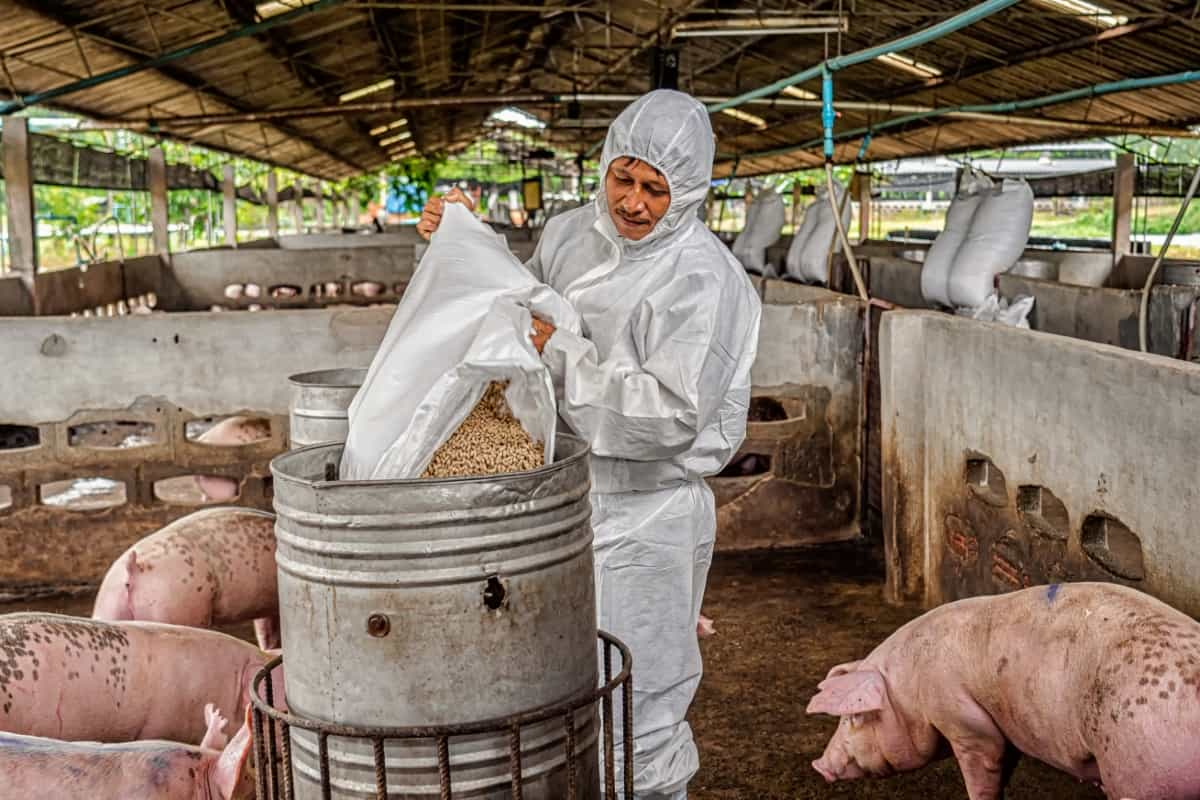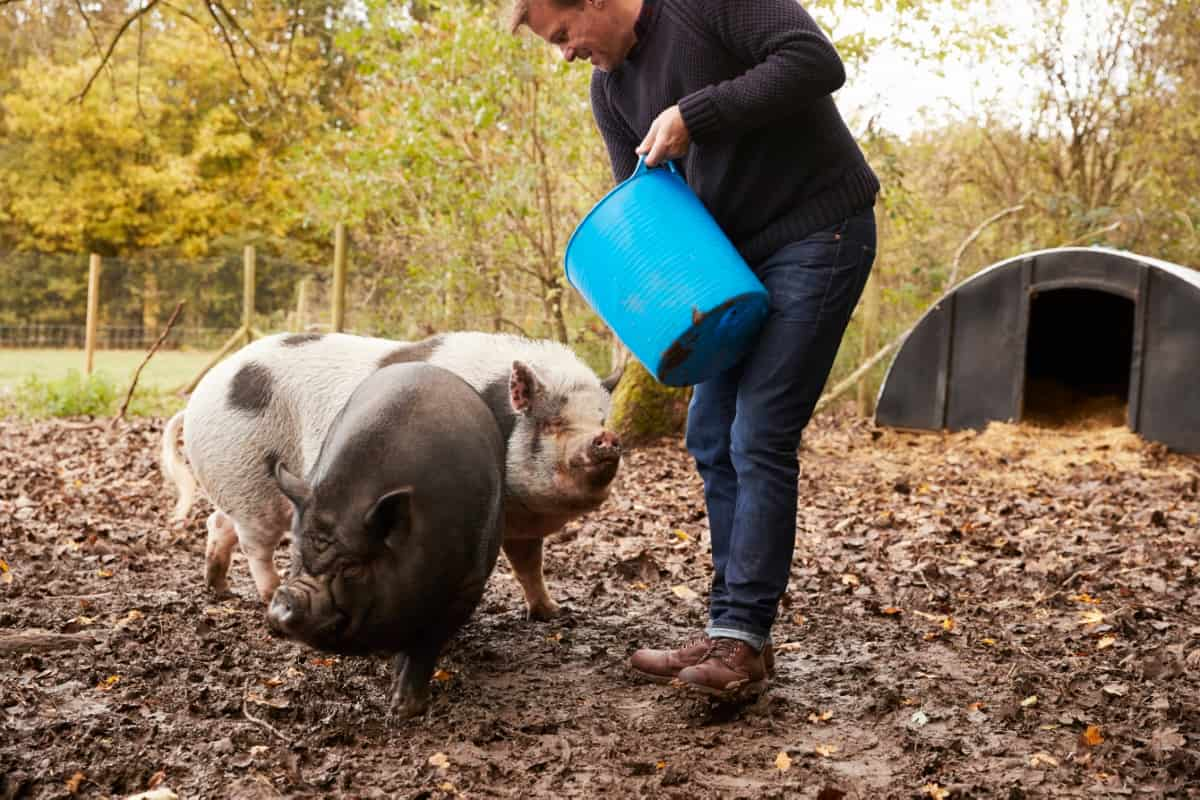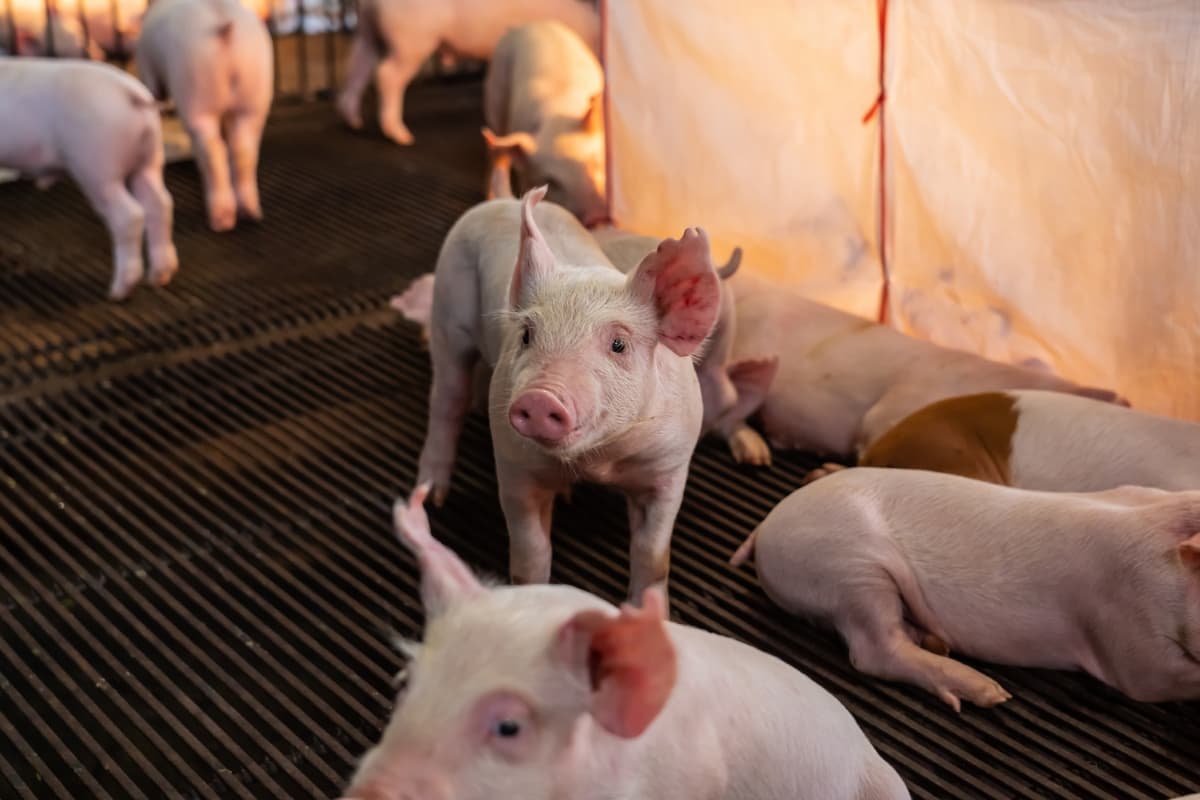Pigs require a balanced diet to meet their nutritional needs for growth, reproduction, and overall health. Key nutrients include water, carbohydrates, fats, protein (amino acids), minerals, and vitamins. Meeting these requirements ensures optimal growth rates, reproductive performance, and disease resistance in pigs.
Factors Affecting Pig Nutrition
Several factors influence pig nutrition, including breed, age, weight, gender, environmental conditions, and production goals. Different pig breeds may have varying nutrient requirements, while factors like age and weight affect feed intake and nutrient utilization. Gender-specific requirements may exist for reproductive functions. Environmental conditions such as temperature, humidity, and housing impact nutrient metabolism and growth.

Homemade Pig Feed Formulations
Key Ingredients for Homemade Pig Feed
Essential Components of Pig Feed
- Grains: Select a mix of grains such as corn, barley, wheat, and oats. These provide essential carbohydrates for energy and growth.
- Protein Sources: Incorporate protein-rich pig feed ingredients like soybean meal, fish meal, or dried whey. These support muscle development and overall health.
- Supplements: Include vitamin and mineral supplements to ensure proper nutrition by adding calcium, phosphorus, vitamins A, D, and E, among others, to meet pigs’ specific dietary needs.
- Fats and Oils: Introduce fats and oils like vegetable oil or tallow to boost calorie content and support healthy skin and coat.
- Fiber: Incorporate sources of fiber such as alfalfa meal or beet pulp to aid digestion and promote gut health.
Selection of Grains and Protein Sources
Adjust the ratios based on the pig’s age, weight, and purpose (growth, reproduction, or maintenance). Ensure a diverse mix to meet nutritional needs and consult with a veterinarian or nutritionist for precise formulations. Regular monitoring and adjustments are crucial for optimal pig health and performance on a homemade feed regimen.
Formulating Pig Starter Feed
Components of Pig Starter Feed
The components of pig starter feed typically include grains like corn, barley, and wheat for energy, along with protein sources such as soybean meal, fish meal, or dried whey to support muscle development. Also, vitamins and minerals are added to ensure proper bone formation, immune function, and overall health.
Balancing Nutrition for Young Pigs
Balancing nutrition for young pigs involves careful consideration of their specific requirements, including amino acids, calcium, phosphorus, and vitamins like A, D, and E. It’s essential to formulate the feed to meet the piglets’ needs during the early stages of life when rapid growth occurs. Aiming for around 1.5-2.0 kilograms of feed per pig per day.
Pig Grower Feed Formulation
Ingredients for Pig Grower Feed
The formulation of pig grower feed typically includes a combination of energy sources, protein, vitamins, and minerals. Common pig feed ingredients may include corn, soybean meal, wheat, barley, and oilseed meals. These ingredients provide essential nutrients such as carbohydrates, amino acids, fatty acids, vitamins, and minerals required for muscle development, bone formation, and overall health.
Meeting the Needs of Growing Pigs
Feeding recommendations depend on factors such as pig weight, breed, and environmental conditions, but a general guideline is to provide 2-3% of body weight per day. Regular monitoring and adjustment of the pig grower feed formulation based on pig growth and health indicators are crucial for ensuring optimal results in raising healthy and productive pigs.
Pig Finisher Feed Recipe
Composition of Pig Finisher Feed
Common pig feed ingredients include wheat, triticale, barley, oats, peas, lupins, beans, lentils, canola, soybean, and products derived from these ingredients. Essential minerals such as calcium, phosphorus, and trace elements should be added to pig finisher feed to support bone health and metabolic functions. Vitamins like vitamins A, D, and E are included to maintain overall health and immunity.
Preparing Pigs for Market
Preparing pigs for the market involves gradually transitioning them to this finisher feed, ensuring they reach the desired weight and condition for slaughter. Careful monitoring of feed intake, health, and environmental conditions is essential to maximize growth efficiency and produce high-quality pork products.
Customized Pig Feed Formulas
Tailoring Feed for Specific Needs
Customized pig feed formulas to meet individual pig requirements by considering factors such as age, weight, health status, and production goals. Adjusting nutrient levels, ingredient composition, and feed additives accordingly.
Adjusting Formulas for Different Pig Stages
Adapting feed formulations to suit the nutritional demands of various growth stages, including starter, grower, finisher, and gestating/lactating periods. Fine-tuning protein, energy, vitamin, and mineral content to support optimal growth, reproduction, and overall health throughout each stage of pig development.
In case you missed it: Fengjing Pig Breed: Characteristics, Origin, History, Lifespan, Price, and Size

Nutrient Balance in Pig Feed
Achieving the Right Protein Levels
Incorporating protein-rich ingredients such as soybean meal, fish meal, or dried whey helps meet their dietary requirements. Balancing amino acids like lysine, methionine, and threonine is crucial for optimal protein utilization and growth.
Managing Energy Content
Energy content influences pig growth and reproduction. Corn, barley, and wheat are common energy sources in pig diets. Including fats and oils can increase energy density, but moderation is key to preventing digestive issues. Balancing energy with protein ensures efficient utilization and proper weight gain. Regular monitoring and adjustment are essential to meet pigs’ evolving nutritional needs.
Mixing and Preparing Homemade Pig Feed
Proper Mixing Techniques
Effective mixing pig feed is crucial for balanced homemade pig feed. Utilize a clean, dedicated mixing area and tools to prevent contamination. Combine ingredients thoroughly, ensuring uniform distribution of nutrients. Aim for consistency in mixing pig feed in particle size to prevent selective feeding. Regularly monitor feed quality and adjust mixing procedures accordingly.
Ensuring Feed Hygiene and Safety
Maintain strict hygiene standards to prevent microbial contamination and mold growth. Store ingredients in a cool, dry place in airtight containers to preserve freshness. Clean mixing equipment after each use and sanitize regularly to prevent cross-contamination. Implement a pest control strategy to safeguard feed integrity. Adhere to feed safety guidelines to protect pigs from toxins and pathogens. Source ingredients from reputable suppliers and inspect for quality.
Testing and Quality Assurance
Nutrient Analysis of Homemade Feed
- Chemical Composition Evaluation: Utilizing laboratory tests to determine the precise nutrient content, including protein, carbohydrates, fats, vitamins, and minerals.
- Microbiological Assessment: Ensuring feed safety by examining for microbial contamination, such as bacteria, fungi, and toxins.
- Nutritional Balance Verification: Validating that the homemade feed meets the nutritional needs of the target animals through comparative analysis with established standards.
Quality Control Measures
- Ingredient Sourcing: Procuring high-quality ingredients from reputable suppliers to maintain feed integrity.
- Batch Consistency Checks: Implementing routine inspections during feed production to guarantee uniformity and adherence to formulation specifications.
- Packaging Integrity Assurance: Verifying that packaging materials meet hygiene standards and provide adequate protection against external factors, such as moisture and pests.
In case you missed it: How to Create a Guinea Pig Farming Business Plan: From Breeding to Market

Cost-Effective Homemade Pig Feed
Budget-Friendly Pig Feed Ingredients
- When formulating homemade pig feed, prioritize cost-effective Pig feed ingredients to maximize savings without compromising on nutrition.
- Common budget-friendly ingredients include grains like corn, barley, and wheat bran, which provide essential carbohydrates and fiber. Utilize local sources for bulk purchases to further reduce costs.
- Protein-rich options such as soybean meal, fish meal, or even leftover dairy products can supplement the feed economically.
- Calcium and mineral supplements can be sourced inexpensively through alternatives like crushed eggshells or agricultural lime.
Calculating Feed Costs and Savings
- Maintain meticulous records of ingredient prices and quantities to calculate feed costs per pig accurately.
- Regularly assess the market for cost fluctuations and adjust ingredient ratios accordingly to optimize savings.
- Compare the cost of homemade feed to commercial alternatives, factoring in transportation and storage expenses, to determine overall savings and cost-effectiveness.
In case you missed it: Pig Breeding Cost and Profit: Production Economics and Project Report

Conclusion
Creating homemade pig feed formulations can be a cost-effective way to provide quality nutrition for your pigs. However, always consult with a veterinary doctor or animal nutritionist to ensure your homemade feed formulations meet the nutritional needs of your pigs. Also, local regulations and restrictions may apply to the production and feeding of homemade feeds.
- Feed Your Flock for Less: Top 10 Tips to Save on Chicken Feed
- Ultimate Guide to Ossabaw Island Hog: Breeding, Raising, Diet, and Care
- Hatching Answers: The Top 10 Reasons Your Chickens Aren’t Laying Eggs
- Eggs and Economics: Breaking Down the Cost of Raising Backyard Chickens
- Defend Your Greens: Proven Methods to Keep Iguanas Out of Your Garden
- Ultimate Guide to Cinnamon Queen Chicken: A Comprehensive Guide for Beginners
- Ultimate Guide to California Tan Chicken: Breeding, Raising, Diet, Egg-Production and Care
- Ultimate Guide to Marsh Daisy Chicken: Breeding, Raising, Diet, and Care
- 10 Types of Chicken Farming Businesses You Can Start for Profits